How to Develop a Basic CRUD Mobile App with NativeScript?
In this guide, you'll create a full-featured CRUD (create, read, update, delete) mobile application using NativeScript.
This tutorial walks you through setting up your project, configuring a robust backend on Back4app, and integrating a NativeScript frontend to manage and update data seamlessly.
We begin by establishing a new Back4app project called Basic-CRUD-App-NS, which serves as the backbone for your data operations. You’ll then define a flexible database schema by setting up collections and fields, either manually or by leveraging the Back4app AI Agent.
Following this, you'll utilize the Back4app Admin App—a no-code interface designed for effortless data manipulation—to perform CRUD tasks efficiently.
Lastly, you will integrate your NativeScript mobile app with Back4app using REST APIs, ensuring your backend is secure with advanced access controls.
By the end of this tutorial, you'll have a production-ready mobile application that not only performs essential CRUD operations but also incorporates user authentication and secure data handling.
- Master the art of building CRUD mobile apps that manage data efficiently using a reliable backend.
- Learn how to design a scalable database and seamlessly integrate it with a NativeScript frontend.
- Discover how to use a drag-and-drop admin interface (the Back4app Admin App) to simplify data management.
- Understand best practices for securing your backend with ACLs and Class-Level Permissions.
- A Back4app account with a new project set up. If you need assistance, check out Getting Started with Back4app.
- A NativeScript development environment. Install the NativeScript CLI and set up your environment by following the NativeScript documentation.
- Basic knowledge of JavaScript/TypeScript, NativeScript, and RESTful APIs. Familiarize yourself with the NativeScript guides if necessary.
Before starting, ensure you have:
- Log into your Back4app dashboard.
- Select the “New App” option.
- Name your project: Basic-CRUD-App-NS and follow the instructions to create it.
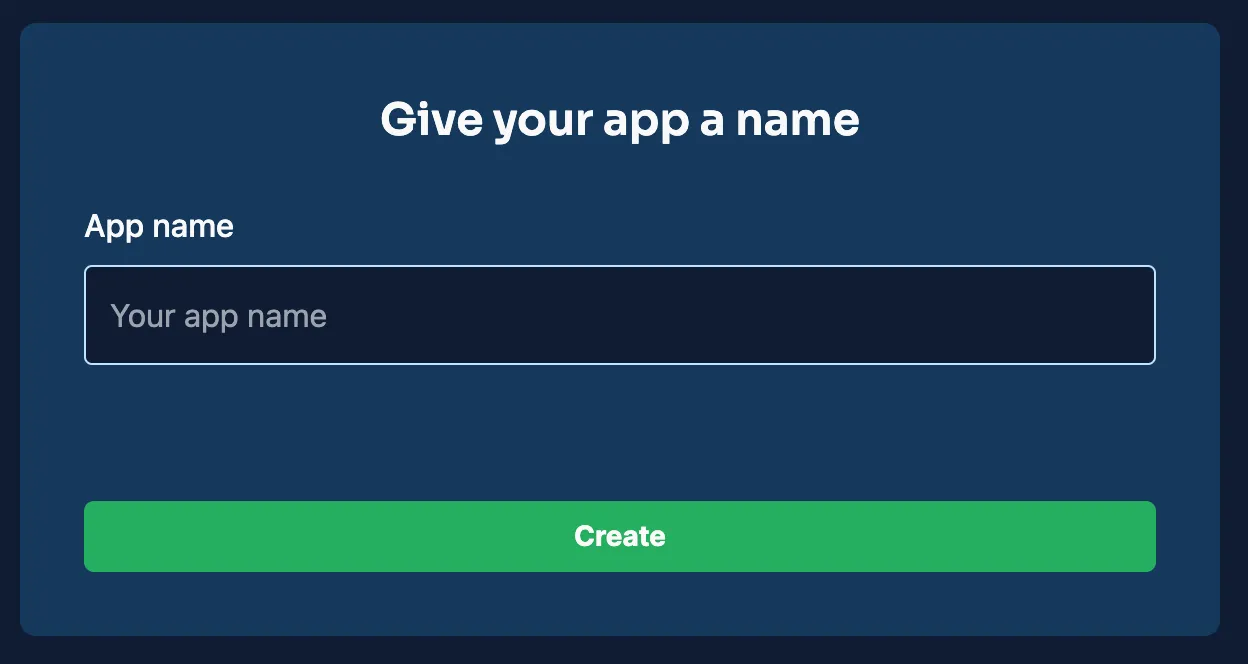
Once your project is set up, it will be listed in your dashboard, ready for backend configuration and management.
For this CRUD mobile app, you'll create key collections. Below are sample collections along with the essential fields and data types to set up your schema, enabling the fundamental operations to create, read, update, and delete data.
This collection holds details for each item.
Field | Data Type | Description |
|---|---|---|
_id | ObjectId | Auto-generated primary identifier. |
title | String | Name or title of the item. |
description | String | Short summary of the item. |
created_at | Date | Timestamp when the item was created. |
updated_at | Date | Timestamp when the item was last modified. |
This collection stores user credentials and details.
Field | Data Type | Description |
|---|---|---|
_id | ObjectId | Auto-generated primary identifier. |
username | String | Unique username of the user. |
String | Unique email address. | |
password_hash | String | Securely hashed password. |
created_at | Date | Account creation timestamp. |
updated_at | Date | Last update timestamp for the user profile. |
You can create these collections manually in the Back4app dashboard by adding a new class for each collection and defining the respective columns.
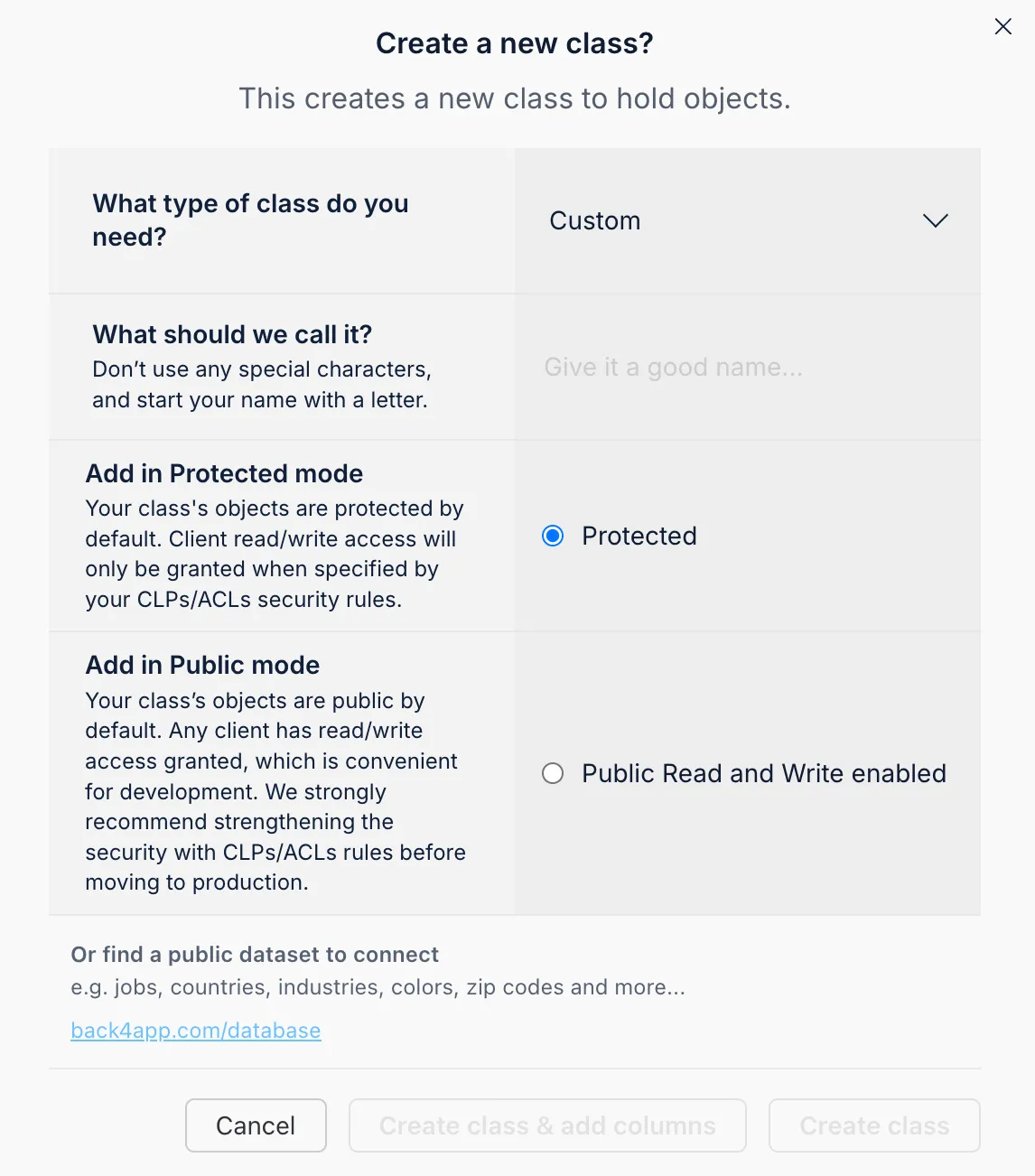
Define each field by selecting a data type, naming it, and specifying default values or requirements.
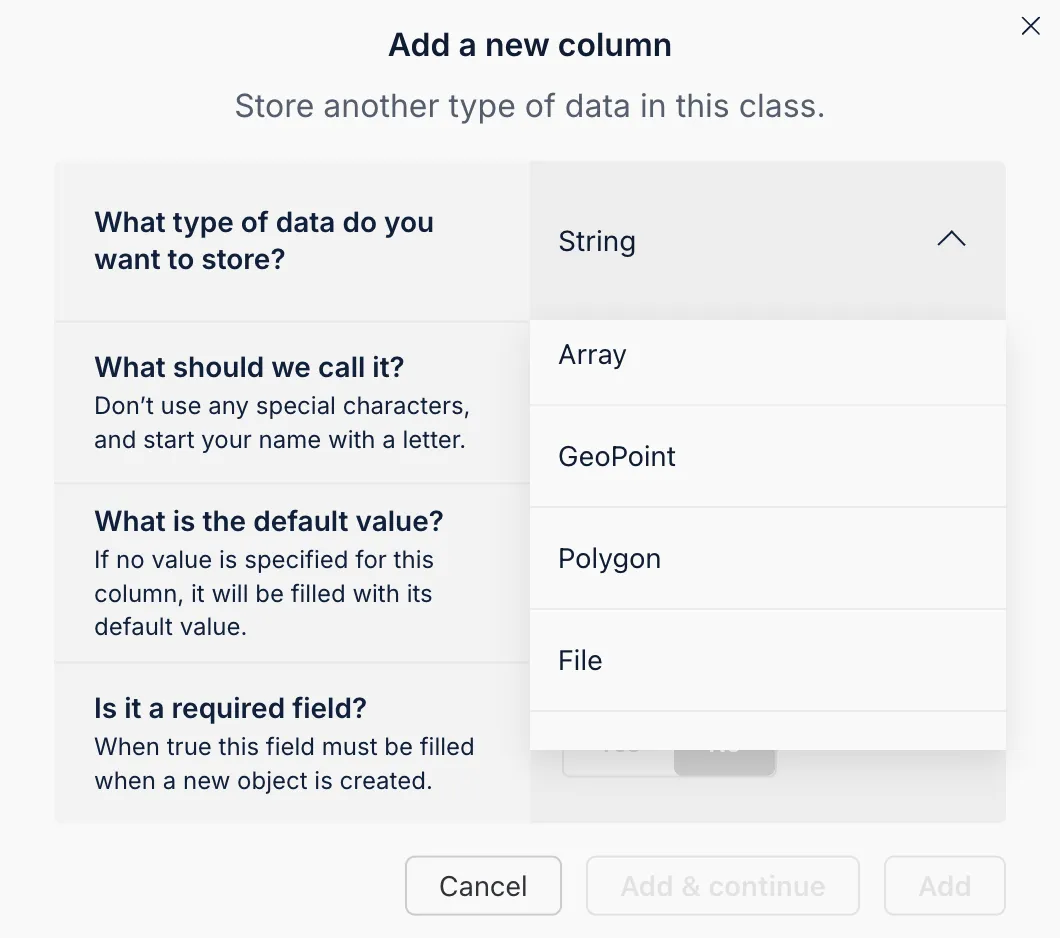
The Back4app AI Agent is an efficient tool within your dashboard that can auto-generate your database schema based on a prompt describing your desired collections and fields. This feature streamlines the process and ensures consistency.
- Launch the AI Agent: Access it from the Back4app dashboard or project settings.
- Detail Your Data Model: Input a prompt outlining the collections and fields you require.
- Review and Confirm: Examine the generated schema suggestions and apply them to your project.
This process saves time and ensures your schema is both consistent and optimized.
The Back4app Admin App offers a no-code interface to manage your backend data easily. Its drag-and-drop design enables quick and effective CRUD operations.
- Go to the “More” menu in your Back4app dashboard.
- Select “Admin App” and then click “Enable Admin App.”
- Set up your admin credentials by creating the first admin user, which also establishes roles (e.g., B4aAdminUser) and system collections.
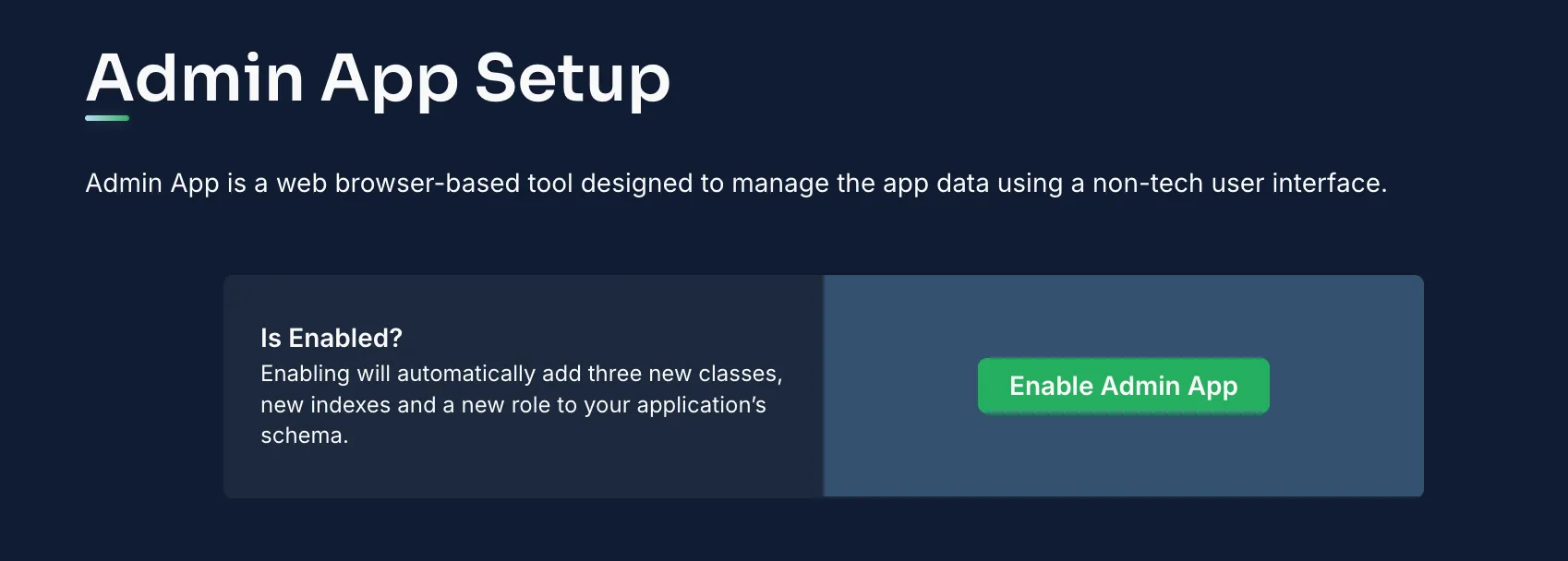
Once enabled, log into the Admin App to begin managing your collections.
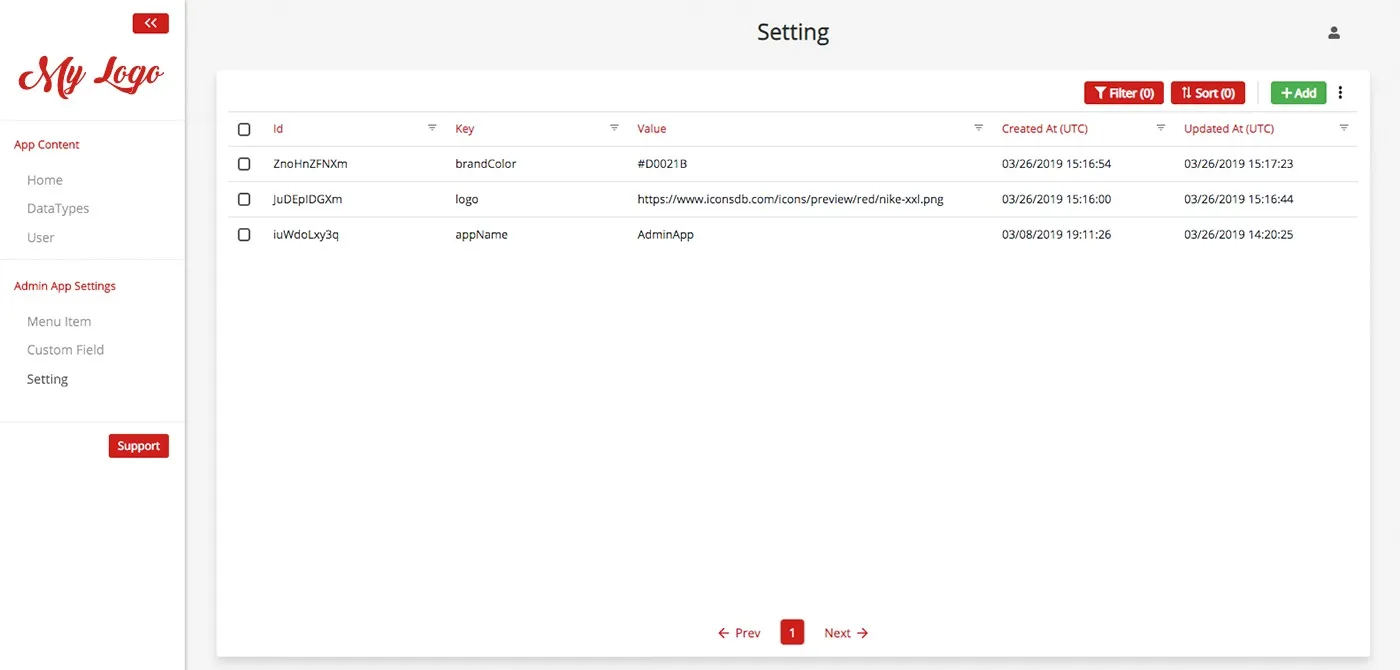
Within the Admin App, you can:
- Create Records: Use the “Add Record” option within any collection (for example, Items) to insert new entries.
- Read/Modify Records: Click on any record to view its details or edit its information.
- Remove Records: Select the delete option to eliminate records that are no longer needed.
This intuitive tool enhances user experience by simplifying data management tasks.
After setting up your backend and managing data via the Admin App, the next step is to link your NativeScript mobile app to Back4app.
Since the SDK integration may not be optimal for NativeScript in this scenario, you can utilize REST APIs to perform CRUD operations.
Below is an example of how to retrieve items from your Back4app database using a REST call in a NativeScript service file.
Integrate similar REST API calls within your NativeScript components to handle create, update, and delete operations.
Protect your data by setting ACLs for each object. For example, to create a private item, use the following approach:
Within the Back4app dashboard, adjust the CLPs for each collection to define default access rights. This helps ensure that only authorized users can access or modify sensitive data.
Back4app utilizes Parse’s User class to manage authentication. In your NativeScript app, implement registration and login processes as demonstrated below.
A similar method can be used for logging in and managing user sessions. Additional functionalities like social logins, email confirmations, and password resets can be configured through the Back4app dashboard.
Well done! You have now created a complete basic CRUD mobile application using NativeScript and Back4app.
Your project, Basic-CRUD-App-NS, includes a well-defined backend with collections for Items and Users, managed seamlessly via the Admin App.
You have also integrated your NativeScript frontend with Back4app through REST APIs and secured your data with robust ACLs and CLPs.
Next Steps:
- Enhance Your Mobile App: Add features such as detailed views, search functionality, and push notifications.
- Expand Functionality: Integrate advanced backend features like Cloud Functions or third-party API services.
- Further Learning: Explore the Back4app documentation and additional NativeScript resources to refine your skills.
Happy coding and best of luck with your future mobile app projects!
